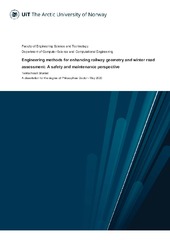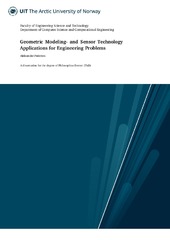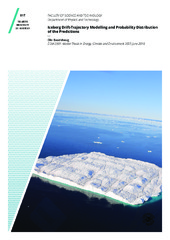| dc.contributor.advisor | Luppino, Luigi Tommaso | |
| dc.contributor.advisor | Kuttner, Samuel | |
| dc.contributor.author | Aspheim, Fredrik Emil | |
| dc.date.accessioned | 2025-06-11T11:22:04Z | |
| dc.date.available | 2025-06-11T11:22:04Z | |
| dc.date.issued | 2023-06-01 | |
| dc.description.abstract | Dynamic positron emission tomography (PET) imaging is a valuable tool in medical research and practice. By measuring the distribution of a radioactive tracer within the body over time, dynamic PET imaging allows the visualization of various physiological and biological processes. Furthermore, it allows for quantification of such processes using tracer kinetic modeling. However, kinetic modeling requires knowledge of the arterial input function (AIF), i.e., the tracer time-activity curve in arterial blood. Despite the accuracy of continuous blood sampling, this procedure is invasive and necessitates alternative estimation methods. Among others, the image-derived input function (IDIF) is commonly used, but requires labor-intensive manual delineation of regions of interest during data preprocessing. In recent years, deep learning has emerged as a promising method for AIF estimation. This thesis aims to develop a robust deep learning methodology for AIF estimation in small animal imaging using dynamic PET, that also ensures that the model is interpretable. Two models, the ResNet, and the AttNet, were examined. Both models were inspired from state-of-the-art deep learning architectures for classification and segmentation tasks. In this work, the networks were modified to perform regression on four-dimensional PET data. The ResNet provides a well-known and computationally efficient design, allowing to train deep networks. On the other hand, the AttNet architecture is based on an encoder-decoder design, providing a bottleneck which enforce the network to learn relevant imaging features. This network also provides insights into the model predictions by using multiple attention mechanisms, which allows for visualization of the model focus in the different layers. Both demonstrated a strong agreement between their predicted deep-learning-derived input function (DLIF) and the IDIF, with the advantage of bypassing the tedious manual segmentation of the data. While both models performed well on kinetic modeling, a detailed interpretability analysis revealed that the ResNet heavily relied on bias terms and failed to learn significant image features. In contrast, the AttNet successfully avoided these limitations, providing useful insights through attention maps and demonstrating flexibility with its fully convolutional architecture. This work represents an important step towards the development of reliable, flexible, and interpretable deep learning methodologies for small-animal dynamic PET imaging. | en_US |
| dc.identifier.uri | https://hdl.handle.net/10037/37236 | |
| dc.language.iso | eng | en_US |
| dc.publisher | UiT Norges arktiske universitet | en_US |
| dc.publisher | UiT The Arctic University of Norway | en_US |
| dc.rights.holder | Copyright 2023 The Author(s) | |
| dc.rights.uri | https://creativecommons.org/licenses/by-nc-sa/4.0 | en_US |
| dc.rights | Attribution-NonCommercial-ShareAlike 4.0 International (CC BY-NC-SA 4.0) | en_US |
| dc.subject.courseID | FYS-3941 | |
| dc.subject | VDP::Matematikk og Naturvitenskap: 400::Matematikk: 410::Anvendt matematikk: 413 | en_US |
| dc.subject | VDP::Mathematics and natural science: 400::Mathematics: 410::Applied mathematics: 413 | en_US |
| dc.subject | VDP::Matematikk og Naturvitenskap: 400::Matematikk: 410::Statistikk: 412 | en_US |
| dc.subject | VDP::Mathematics and natural science: 400::Mathematics: 410::Statistics: 412 | en_US |
| dc.subject | VDP::Matematikk og Naturvitenskap: 400::Informasjons- og kommunikasjonsvitenskap: 420::Simulering, visualisering, signalbehandling, bildeanalyse: 429 | en_US |
| dc.subject | VDP::Mathematics and natural science: 400::Information and communication science: 420::Simulation, visualization, signal processing, image processing: 429 | en_US |
| dc.title | Explainability of deep-learning-derived input function in dynamic PET imaging | en_US |
| dc.type | Master thesis | en_US |
| dc.type | Mastergradsoppgave | en_US |


 English
English norsk
norsk



